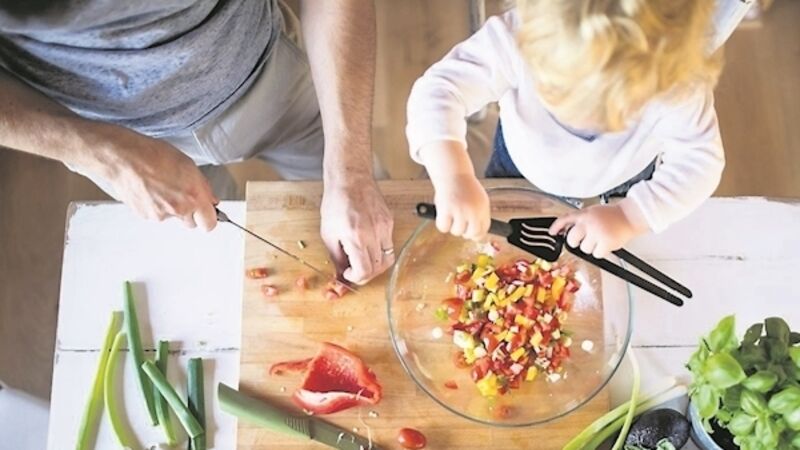How to cook with your kids at home eat up the time off

Keeping your family safe, well, and nourished is a feat at present. No one should feel pressured to do any more than just get through this time. With most of the family indoors, you may be looking for ways to distract children.
Activities involving food can be fun and educational. Food education projects around the world have great websites with ideas and resources that can be used at home.
In Australia, an ex-schoolteacher, Alice Zaslavskey, who was a contestant on the TV show Master Chef, is educating children about food in an engaging way.
She has created podcasts and interactive webisodes that talk about subjects such as ‘why onions make ‘you cry’ or exploring the strange and wonderful world of fungi. Her website, Phenomenom, is packed with resources to fill the time.
Nearer to home, in the UK, there is an initiative called The Flavour School, which encourages children to learn about food by exploring it with all of their senses andby expanding their vocabulary.
The website has instructions for workshops and games that can be played with the whole family

A beautifully made book called Sow Grow Munch is also available online
It was written by Jilly Dougan, who is based in Northern Ireland, and it has lots of simple, but nutritious, recipes that could be incorporated into the day. It is also brimming with gardening tips and growing information.
The Edible School Yard was started by Alice Waters, in California. It was one of the first food education projects to become well-known.
Over the years, they have built up a large bank of knowledge and most of their teaching resources are free to access online
here
There are two recipes on my page here to get you started. There is lots to be learnt by weighing and measuring ingredients, but if it is easier for you, scoops and cups are included as well as weighing-scale amounts.
The ‘salad of the imagination’ is more of an assembly line than a recipe, but it is designed to get young people thinking about different tastes, textures, and flavours and how they can mix them together.
You and the young chef can choose your ingredients after examining what is in your fridge or cupboards, thinking about which flavours go well together, and how they will work in a salad.
For example, it’s always nice to have something crunchy along with the soft, green leaves. When you are making a salad dressing, the usual ratio is one-part acid to four-parts oil.
Vinegars, such as cider vinegar, wine vinegar, or lemon juice, are the most popular acids used to make a salad dressing.
I hope some of these will prove a distraction, if you are looking for one.








